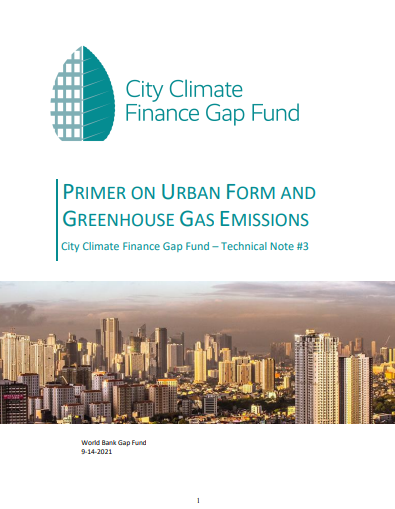Primer on Urban Form and Greenhouse Gas Emissions
September 13, 2021
Urban areas are responsible for the majority of GHG emissions. The next several decades will see the construction of a large amount of new urban area globally, which means that there is still an opportunity to encourage low-carbon urban growth.
Urban form impacts GHG emissions in various ways: o Urban density impacts emissions from transportation, embodied emissions related to infrastructure, and building energy consumption.
- Mixed land use, better street connectivity, and walkable urban design impact vehicular emissions by reducing the length and frequency of car trips.
- Reducing the quantity of infrastructure that uses carbon-intensive materials like cement and steel, by using low-carbon materials, green infrastructure, or nature-based solutions can reduce embodied emissions related to infrastructure.
- The use of certain materials and the orientation of buildings can reduce the intensity of the urban heat island effect, reducing emissions from the use of energy for cooling.
The relative impact of urban form interventions can vary significantly depending on the context. Urban modeling tools can help quantify these impacts in a given city.


